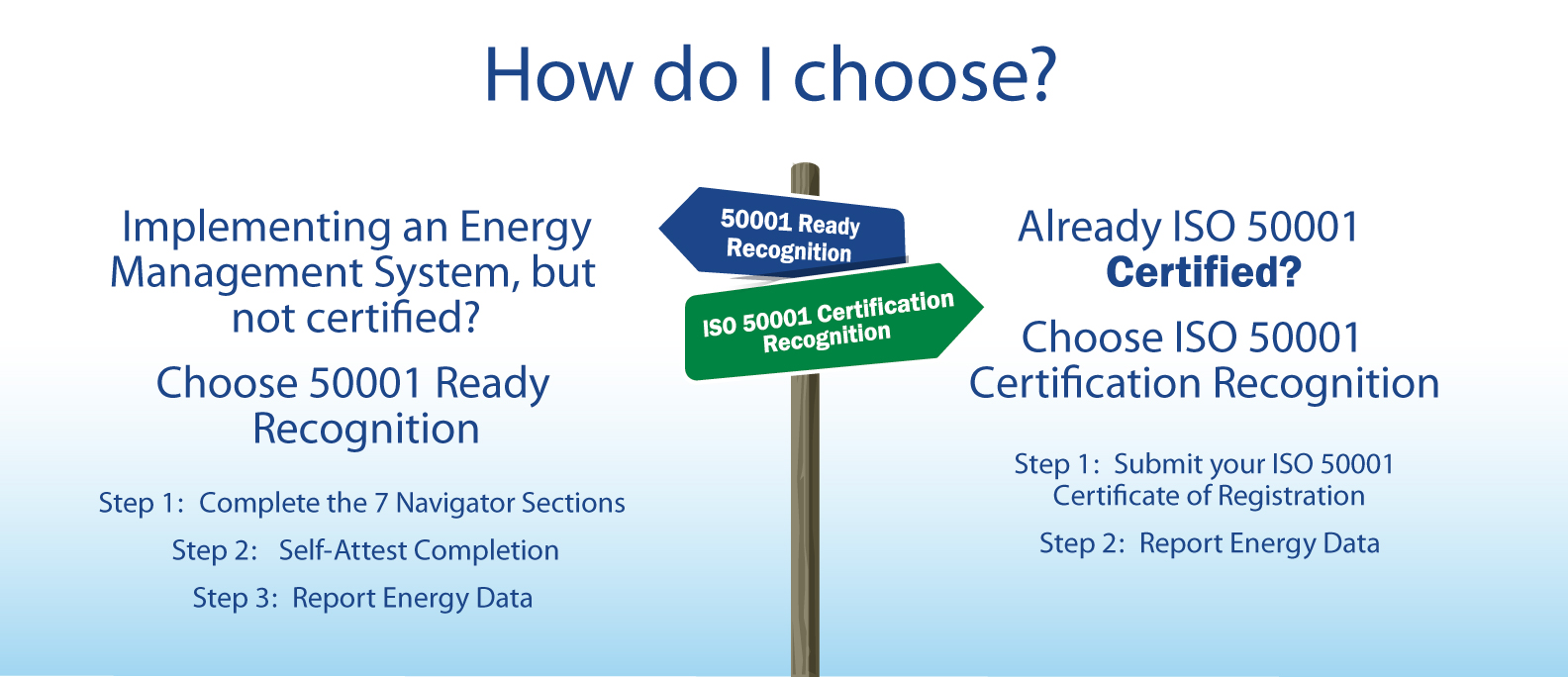Achieve U.S. Department of Energy (DOE) Energy Management System Recognition
The U.S. Department of Energy (DOE) recognizes U.S. facilities that demonstrate leadership in energy management systems structured on ISO 50001. Earning DOE recognition demonstrates your organization’s dedication to continual improvement, efficiency and enhanced competitiveness.
Show your customers, community, and colleagues that you are committed to energy efficiency and operational excellence by pursuing DOE recognition today!
Why Pursue DOE Recognition?
- Demonstrate Credibility: Show your commitment to energy efficiency and best management practices.
- Increase Visibility: Your organization will be featured on DOE’s recognition web page and in DOE communications.
- Use the 50001 Ready Mark: Publicly display your achievement for as long as your recognition is current.
- Support Continuous Improvement: Recognition encourages ongoing progress and benchmarking.
Did you know?
Two Pathways to DOE Recognition
DOE offers two pathways for achieving recognition. Choose the option that best fits your goals:

Guidelines for All Pathways and Projects
- DOE recognition is available only to facilities physically located in the United States.
- Only energy sources that constitute 5% or more of total site-wide energy consumption need to be reported.
- Recognition is valid for one year; re-attest annually to maintain your status.
Ready to Get Started?
- Access the 50001 Ready Navigator
- Create an account or sign in
- Enter your project details
- Submit your documentation to begin the recognition process
Looking for a way to amplify your facility’s DOE recognition?
DOE has partnered with an external provider, Rivanna Natural Designs, to offer DOE Energy Management System recognition plaques & awards for purchase.
If you need further guidance or have questions about which pathway is best for your facility, please contact us.
